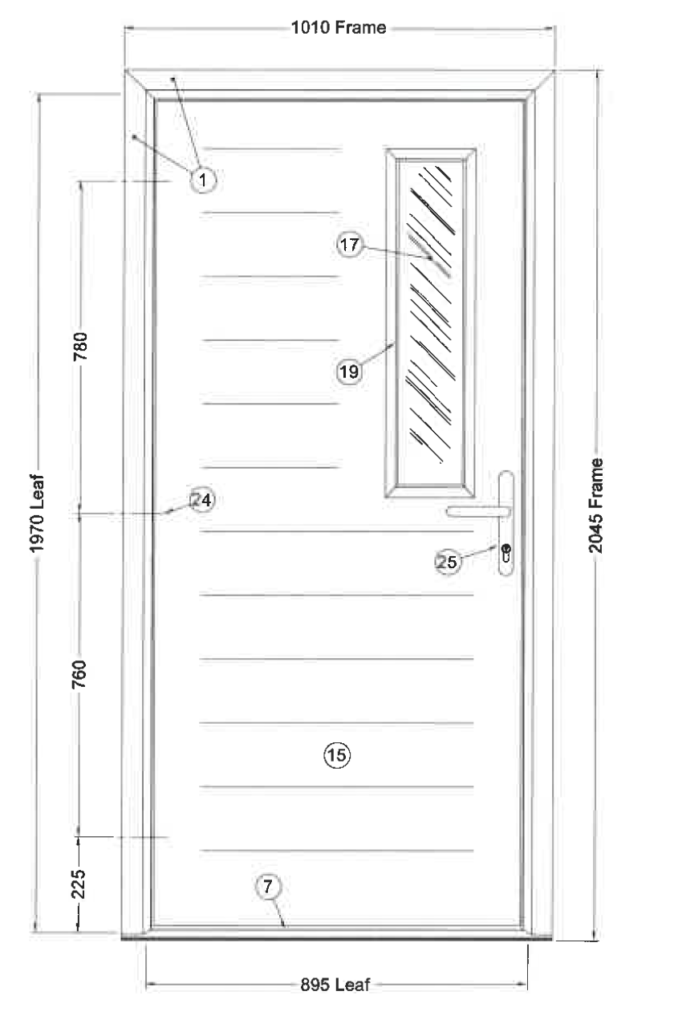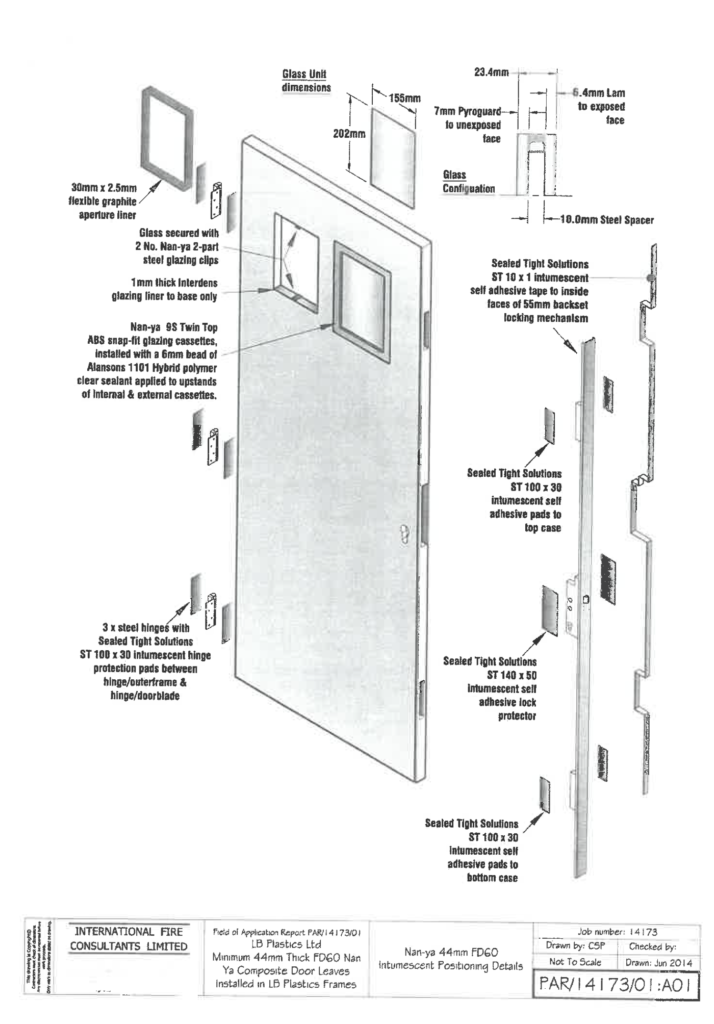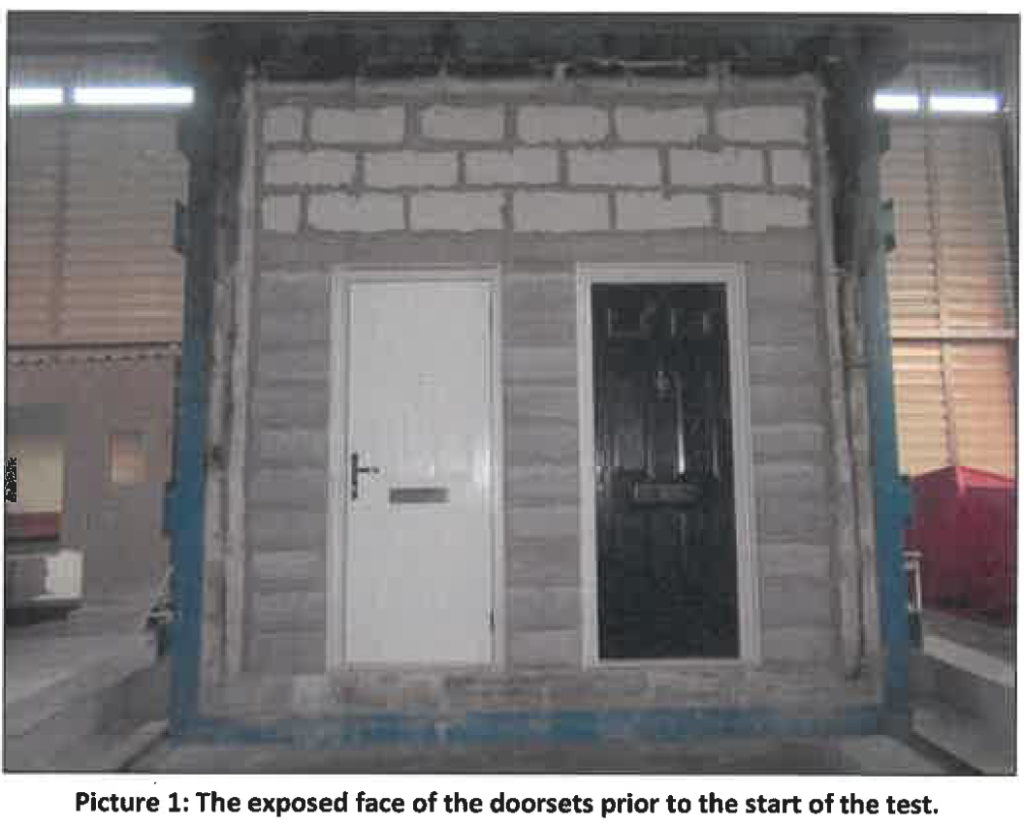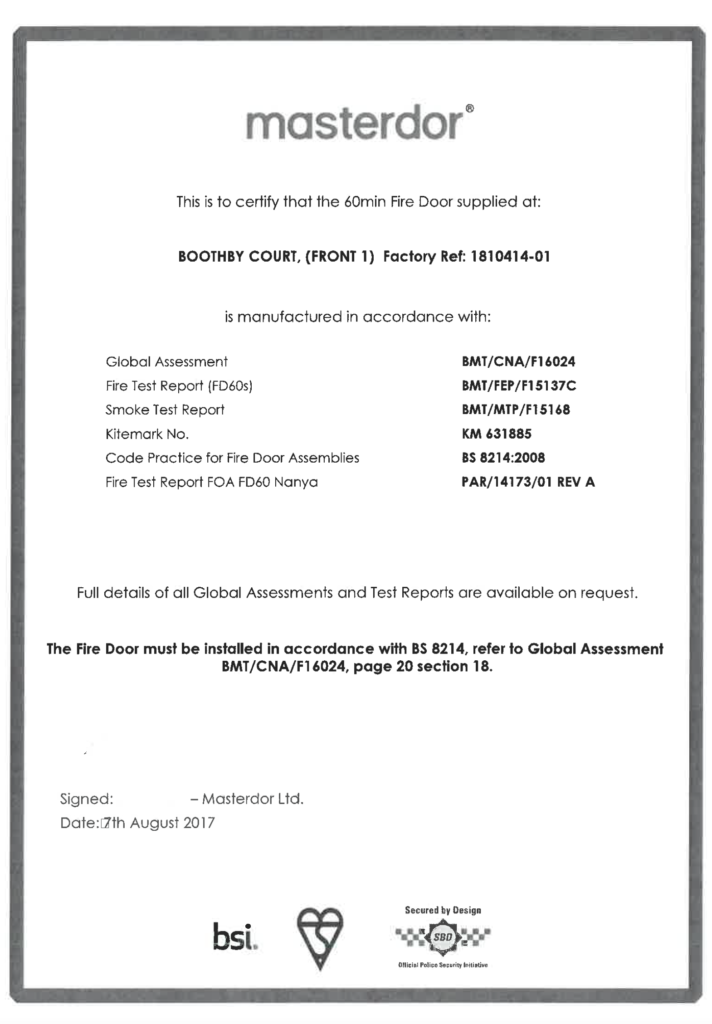Fire safety scandal (3) is LBWF making it up as it goes along?
I have just sent the e-mail pasted below to LBWF Chief Executive Martin Esom. It examines LBWF’s 2017-18 installation of 217 flat entrance doors (FEDs) at Northwood Tower and four sheltered housing blocks, and strongly queries whether this alleged improvement programme was based – as it should have been – upon appropriate smoke and fire tests. The conclusion reached is that LBWF’s continuing attempts to promote the idea that it has acted responsibly throughout look ever more shaky.
Relatedly, the controversy over whether the FEDs installed were FD60 (as LBWF initially claimed) or only FD30 (its more recent position) shows little sign of abating.
LBWF’s latest comment on the matter is the following: ‘Based on the evidence that is currently available to us, the Housing Department’s view is that the doors concerned are defective 60 minute doors, rather than fraudulently fitted 30 minute doors and we have reported the door type to MHCLG as a defective door product’.
If the FEDs really are defective FD60s, that is certainly surprising. Of course, when tested, as is now common knowledge, samples taken from the 217 batch failed at 31, 34, and 45 minutes, so the word ‘defective’ is something of an understatement!
Indeed, it well might be asked: what kind of manufacturer was it that produced such unusually shoddy goods, and why on earth was LBWF involved in doing business with them in the first place?
All in all, when subject to questioning, LBWF clearly finds producing a coherent story something of a challenge, and that is never a good sign.
Presumably the senior Labour councillors who call the shots hope that the passage of time, allied to extravagant promises of future expenditure, will diminish public unease.
It may do, or it may not.
But how much better LBWF would look if it learned the lessons of Grenfell, and introduced some real transparency and accountability.
Dear Mr. Esom,
Dear. Mr. Esom,
19 February, 2021
I am writing to register some fresh concerns about LBWF’s 2017-18 installation of 217 flat entrance doors (FEDs) at Northwood Tower and four sheltered housing blocks.
My reasons are as follows.
In recent correspondence, I asked LBWF to provide evidence that the FEDs installed in 2017-18 had been subject to appropriate testing, and in response was forwarded an air leakage (i.e., smoke) test report completed by Exova Warringtonfire in 2013 (ref. 327115), and a fire test report completed by International Fire Consultants Ltd. (ref. PAR/14173/01) a year later.
Clearly, by releasing such material, LBWF wishes to promote the idea that it had acted responsibly, but I believe this interpretation is not supported by the facts.
Fire and smoke tests use samples taken from defined batches to establish validation. It is a universally respected axiom that the samples and batches must share all significant characteristics, since (as has been underlined in the Grenfell hearings) even apparently trivial variations in frame, leaf, seals, and hardware can impact markedly on performance.
What needs to be established in this case, therefore, is the extent to which the samples tested by Exova Warringtonfire and International Fire Consultants Ltd. resembled the FEDs that LBWF later installed.
In effect, this means comparing two particular data sets:
(a) data on the 2013 and 2014 samples, from the reports cited above; and
(b) data on the FEDs installed in 2017-18 (fortuitously already in the public domain, because during 2019, in pursuit of litigation, LBWF sent three of the 217 FEDs, taken from on site, to Dubai for testing by Thomas Bell-Wright International Consultants, with detailed reports resulting).
The outcome that emerges is rather surprising, for, contrary to LBWF’s insinuation, the samples tested in 2013 and 2014 and the FEDs later installed differed in important respects.
The following examples are representative but by no means exhaustive:
(a) the samples tested in 2013 and 2014 incorporated glass window panels, but those later installed did not (see the illustrations in the Appendix, below, points 1 to 3);
(b) the samples tested in 2013 and 2014 had no letterboxes, but those later installed did (again, see Appendix, 1-3);
(c) the sample tested by Exova Warringtonfire featured seals made by Envirograf, Astroflame (Fire Seals) Ltd. and Schlegal, but the FEDs later installed featured seals made by other companies, and there is no way of telling from the various reports if the latter were equivalent or not; and
(d) the sample tested by International Fire Consultants Ltd. had a core of phenolic foam with a minimum density of 90g/m3, but for the FEDs later installed the comparative figure was 75g/m3, 17 per cent less, inevitably decreasing fire resistance.
Some other recently divulged evidence is equally troubling.
The now notorious manufacturer, Masterdor Ltd., supplied LBWF with the 217 FEDs that were installed, and provided a certificate for each one, which showed, amongst other things, its compliance history (the standards it met, the tests it had passed, etc.).
LBWF has sent me about half of these certificates.
That the rest (covering Goddarts House and Northwood Tower) are apparently being withheld in itself is disconcerting.
Nevertheless, the more important point for the present purposes is the fact that, as can be seen from the example in the Appendix at point 4, though the Masterdor certificates cite the 2014 International Fire Consultants Ltd. fire test (ref. PAR/14173/01), none make any mention of the 2013 Exova Warringtonfire smoke test, and in fact reference a completely different smoke test, BMT/MTP/F15168.
Given these observations, many not unreasonably will come to the conclusion that, in response to unwelcome questioning, LBWF is making it up as it goes along, and hoping that no-one spots the resulting inconsistencies.
I trust that as a matter of some urgency you will provide reassurance that this is not in fact the case.
Yours sincerely,
Nick Tiratsoo
Appendix
1. Sample used in Exova Warringtonfire air leakage test, 2013
2. Sample used in International Fire Consultants Ltd. fire test, 2014
3. Sample taken from on site and used in Thomas Bell-Wright International fire test, 2019.
4. Masterdor FED certificate





